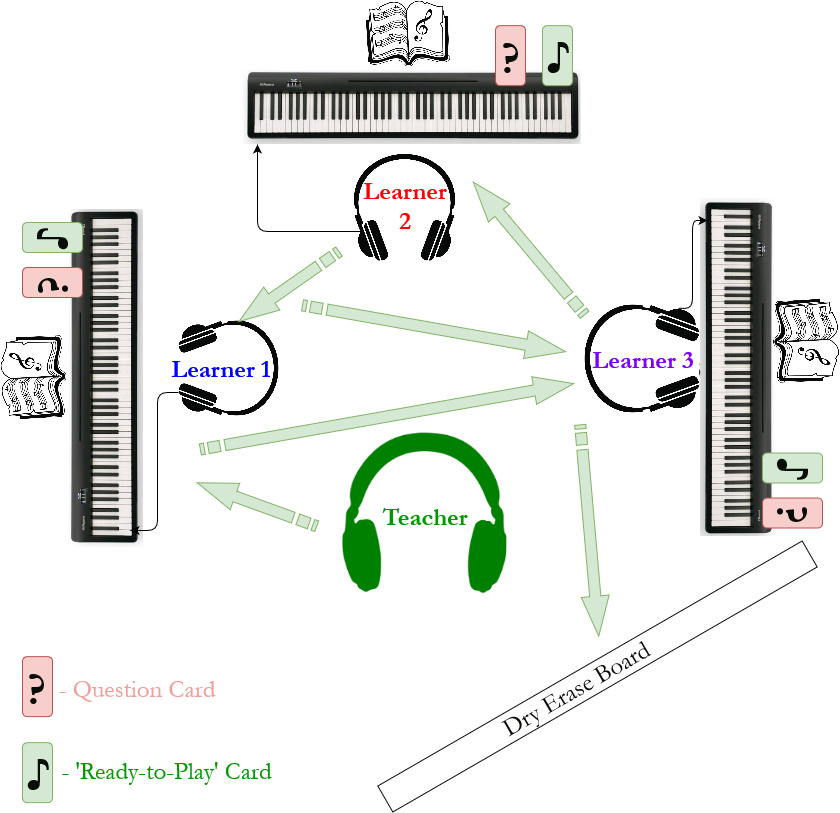This June, I was fortunate to be hired as the new piano instructor at the South Island Studio (SIS). The director of the studio, Lonny Koch, floated the idea during my interview that we could develop a Group Lesson program at SIS.
My initial reaction was confusion and a little bit of dread. Having always enjoyed 1:1 lessons with my teachers, the idea of a group piano lesson seemed to be a pedagogic and logistical mess. How could a teacher effectively instruct more than one student at a time? However, Lonny & I registered for a primer course by a piano instructor named Daniel Patterson which provided us with a basic model for group lessons. We worked through those materials & considered how we could modify the program to match my teaching style, experience and musical worldview. In the end, we developed a system for 3:1 lessons which I will describe in brief below.
In essence, the experience I am trying to address with the group lessons will be familiar to anyone who has taken 1:1 lessons with an expert: the experience of trying to realize a teacher’s suggestion as they watch. For instance, while I was taking lessons in jazz piano this summer, I found myself wishing I could enter into a private practice ‘bubble’ to work through a suggestion from my teacher. He might ask that I perform a passage in a certain way, or practice a lick in twelve keys. Having him watch over me created a sense of performance anxiety and doubt which clouded my thought and slowed my progress. This is what I am trying to address.
If you’re wondering about the format, refer to the diagram I’ve included below. Everyone has their own digital keyboard and is practising with headphones while I circulate to give feedback and guide your progress. Having a private sonic space to work in allows you to hone and develop your music at your own pace & without the anxiety of having a teacher hover over you. Furthermore, it builds self-sufficiency and sight-reading ability by encouraging you to develop your own inner-teacher. Throughout the lesson, we remove our headphones and come together to have discussions, learn new concepts and play aloud as an ensemble.

Schematic diagram of the proposed learning space.
Moving forward, I have four principle goals for the program:
1. To emphasize playing first and foremost. Teaching the hands more than the head, at least initially.
2. To create a supportive, social, fun environment in which to learn piano, collaborate and get excited about the instrument with other beginners.
3. To make it more accessible by charging a significantly lower hourly rate.
4. To build self-efficacy & teach students how to practice.
This section of my website, found under the Inquiry >> Group Piano Lessons Program tab, will document my experience of developing and implementing group piano lessons at SIS.
-S


